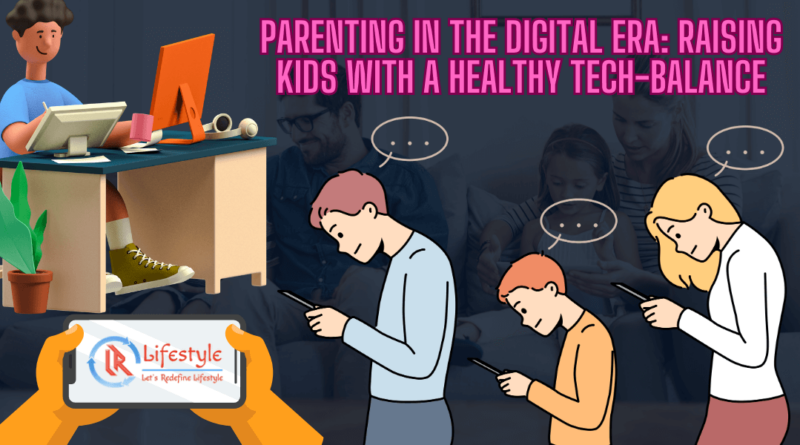Parenting in the Digital Era: Raising Kids with a Healthy Tech-Balance
In the digital age, parenting has taken on a new dimension. While technology has brought incredible opportunities and conveniences, it has also introduced challenges for parents trying to strike a balance between their children’s screen time and real-world experiences. Raising kids with a healthy tech balance has become a paramount concern for families worldwide.
Understanding the Digital Landscape

Before delving into strategies for achieving a healthy tech balance, it’s essential to grasp the digital landscape children are growing up in:
Digital Natives: Today’s children are digital natives, meaning they’ve grown up with technology as an integral part of their lives. They effortlessly navigate smartphones, tablets, and computers, often from a very young age.
Endless Distractions: The digital world offers a myriad of entertainment and educational opportunities, but it also presents endless distractions. From social media to video games, children can easily get lost in the digital realm for hours on end.
Educational Value: Technology can be a valuable tool for learning. Educational apps, online courses, and interactive websites provide new avenues for acquiring knowledge and skills.
Parental Concerns: Parents worry about the potential negative effects of excessive screen time, such as decreased physical activity, sleep disturbances, and impaired social development.
Strategies for Achieving a Healthy Tech-Balance in Parenting

So, how can parents navigate this digital landscape and ensure their children develop a balanced relationship with technology? Here are some effective strategies:
Set Clear Boundaries: Establish clear rules and limits for screen time. Designate specific hours for technology use, and enforce these boundaries consistently. This helps children understand when and how much screen time is acceptable.
Serve as an example: Children frequently imitate the conduct of their parents. Demonstrate a healthy tech balance by managing your own screen time and engaging in offline activities together as a family.
Quality over Quantity: Encourage your children to use technology for productive and educational purposes. Choose age-appropriate apps, games, and websites that promote learning and creativity.
Create Tech-Free Zones: Designate certain areas of the home, like the dining room or bedrooms, as tech-free zones. This fosters family engagement and supports improved sleep patterns.
Monitor and Discuss Content: Stay involved in your child’s digital life. Monitor the content they access, and have open discussions about the information they encounter online. Teach them critical thinking skills to discern credible sources from unreliable ones.
Promote Outdoor Activities: Offset screen time with physical endeavors. Encourage your children to spend time outdoors, playing sports, riding bikes, or simply enjoying nature.
Promote Offline Hobbies: Nurture your child’s interests in offline hobbies like reading, drawing, playing a musical instrument, or participating in sports and arts. These activities help develop a well-rounded individual.
Family Screen Time: Consider allocating specific hours for family screen time, such as watching educational documentaries or playing video games together. This can be a bonding experience that combines technology with quality family time.
Educate About Online Safety: Teach your children about online safety, including the importance of not sharing personal information, recognizing cyberbullying, and being cautious when interacting with strangers online.
Lead by Communication: Maintain open lines of communication with your children. Encourage them to share their online experiences, ask questions, and seek guidance when needed.
Closing Thoughts
Parenting in the digital era requires a proactive and balanced approach. Technology can be a valuable tool for learning and entertainment, but it should complement, not replace, real-world experiences. By setting clear boundaries, being involved in your child’s digital life, and fostering a well-rounded offline existence, you can raise kids who have a healthy tech balance and are equipped to navigate the digital landscape responsibly.
Remember, it’s not about demonizing technology but about guiding children to use it as a positive and enriching aspect of their lives.
Also Read:



